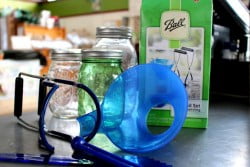 By Jesse Eastman, Owner & General Manager
By Jesse Eastman, Owner & General Manager
So you’ve put in work all spring preparing your garden, selecting plant varieties, fertilizing, protecting plants from late freezes, fending off pests, and watering wilting plants in the heat of summer. Finally that hard work is starting to pay off. Tomatoes are turning red, peppers are getting spicy, herbs are growing fast, and food seems abundant. But for many gardeners, this presents a challenge – suddenly your garden is producing more food than you can eat before it starts to go bad! Don’t let your early season zeal for homegrown food turn into harvest guilt over food that is rotting on the vine or shriveling up in your kitchen. Here’s a few ideas on what to do with all that delicious juicy bounty:
Donate it
There are a number of different programs that let you donate extra garden produce to help feed people who don’t have reliable access to food. A great program here in Larimer County is Plant It Forward, a collaboration between the Food Bank for Larimer County and the Gardens on Spring Creek. Gardeners can drop off extra produce at the Food Bank or at the Gardens, as well as at many neighborhood drop-off locations. In 2014 they did just that, to the tune of over 37,000 pounds of fresh produce!

Preserve it
If you’ve never preserved food before, you’re really missing out. Preserving produce is the best way to get homegrown flavors in the heart of winter when grocery store tomatoes taste more like flavorless gelatin than healthy vegetables. To get started, figure out which method will work best for you. A good book can be a huge help here, and our staff pick is Keeping the Harvest: Preserving Your Fruits, Vegetables and Herbs by Nancy Chioffi and Gretchen Mead (available at Fort Collins Nursery). Additional food preserving resources are available on the Colorado State University Extension website.
There are a few different methods for preserving, each with its own pros and cons.
Freezing
Freezing produce is the simplest and easiest way to preserve food. It’s a great place to start for beginners, as it doesn’t require any special equipment other than freezer bags. Depending on what you’re freezing, it can be as simple as a little bit of processing (skinning, coring, slicing, etc.) and then packing it away in the freezer. You can even freeze loaves of zucchini bread for a rich sweet winter treat. Frozen produce typically has a shorter storage life than properly canned produce, so be sure to enjoy it by midwinter.
Canning
Canning requires a little bit more work in preparing and processing veggies for storage, and a few basic pieces of equipment, but it’s a simple process that pays dividends. From canned whole tomatoes and sauces to pickles to jams and jellies, there are a multitude of ways to pack that summertime flavor into a jar for later. Properly canned food can have a very long shelf life, so keep this in mind when you need your food to last until next March or beyond! Check out our tip page on preserving food.
Drying/dehydrating
Drying or dehydrating certain produce and herbs brings a whole new level of versatility to your preserved food game. Dehydrated tomatoes ground into a powder can be used as a flavoring, or reconstituted with water to make tomato paste, juice, or broth. Drying herbs is a wonderful way to make sure your pantry is stocked with flavor, and as I’ve mentioned on our Facebook page, drying herbs is one of the few places where you can really save money vs. buying dried herbs at the store. Don’t forget about your fruit either – dried apples are great for teething infants, and dried berries can make that bowl of cereal in January taste like July!
Save Seed
Depending on what type of vegetables are in your garden, saving seed can mean saving money.
Not all seed can be saved and replanted, at least, not if you want the same veggie next year as you grew this year. This is why heirloom varieties are so special. Hybridized plants (non-heirloom) are developed by carefully cross-pollinating plants with desirable characteristics until the propagator decides they’ve got a winning combination. The seeds from these plants are not likely to produce the same fruit as their parent plant because pollen from another plant may have muddled up the genetic mix. Even carefully preventing cross-pollination will sometimes fail to produce seed that is genetically identical to the parent. Heirloom varieties, on the other hand, are by definition “open-pollinated,” which means their seed can be collected and planted year after year, regardless of whose pollen has gotten mixed in during the pollination process, and the plants grown with that seed should always match the previous generation.
Now that you’ve determined whether you have seed worth saving, it’s time to make sure you are saving the seed in such a way as to ensure its viability for next year. Here’s our tip page on seed saving. Harvest your seed too early, and it may not have matured enough. Harvest it too late, and it may have already dispersed itself allover your garden. Every type of plant has unique needs when it comes to properly harvesting seed, and fortunately there are some great resources available to help. In particular, take a look at the Living Seed Library, a Colorado organization dedicated to community prosperity and health through the collection and preservation of seeds. They have a great section on saving seed with how-to guides and an extensive list of resources and references.
Whatever you choose to do with your harvest, there’s no reason to let it go to waste. Dry it, freeze it, can it, donate it. When the earth gives you so much, it’s only fair you use it all!
Originally published on August 5th, 2015.
